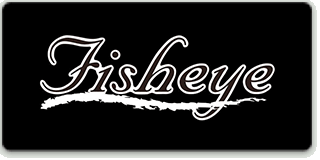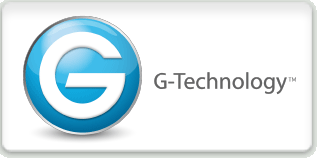GEAR TESTS: PANASONIC LUMIX GH4
 |
Chris Parsons Nauticam Team Member  |

The Panasonic GH4 made big news when it debuted this spring. Not only did it build on the already excellent GH3, but it added a huge feature: 4K video. The GH4 can record 4K (also called Ultra HD) video at 30fps progressive. And this is not just 4K as an afterthought; this is high quality 100Mbps+ 4K video with a surprising amount of headroom for small color or exposure corrections. The camera can also record up to 96 fps HD to be played back at 24 fps or 30 fps. At 24 fps, this is a 400% slowdown, which can lend a whole new look to underwater video.
The new GH4 is very similar to the GH3 in physical size and button placement. The GH4 will actually work in the NA-GH3, with only one control that doesn't work properly. Nauticam offers a $20 upgrade kit to make this work for existing GH3 housing owners. Nauticam is working on a GH4 specific housing that will include some of the features including in the latest housings, including the new port locking latch, and the electronics for the vacuum system.
We brought the very first prototype of the NA-GH4 to Little Cayman for testing. The housing includes the built-in handles first seen in the NA-EM1 housing, along with improved ergonomics like easier access to ISO and white balance controls. ISO changes are now a simple button push and wheel turn with no reach required. Custom white balance is a thumb push on the WB button, then up arrow then shutter pull. While it might sound complicated, it is easily accomplished with virtually no reach. The camera has 5 programmable function buttons, so you can really customize it for your shooting preferences.
Video quality out of this camera is excellent when exposure and white balance are done correctly in camera. The GH4 is the camera many people have been waiting for. Pre-order your new NA-GH4 housing from backscatter.com now!
 |
Jim Decker CEO  |

Ultra HD 4K - 4 Times the Resolution of HD
The Panasonic GH4 can record video in Ultra HD at a resolution of 3840x2160 30p/24p or 4096x2160 24p. Standard HD resolution is only 1920x1080p—making 4K 4 times the resolution of HD. This is why you might also hear 4K referred to as "quad HD". The GH4 is the only mirrorless or SLR camera to offer on board 4K 30p video recording directly to an SD card—no bulky external recording units required.
Same Workflow as HD
I had no problem playing back the 4K files from the GH4 on my Mac Book Pro. No stuttering or dropped frames. Editing in Final Cut was the same as HD, also without any dropped frames or playback issues while editing.
The 4K files are recorded in IPB format at 100 Mbps. While this format is more compressed than the ALL-I format, the quality is still really good and will hold up to a bit of post production editing. As a note, the Canon 5D Mark II also shot in this same format at 42 Mbps.
While I didn't shoot any 1080p footage on this trip, it is available on this camera at 60p and at a bit rate of 200 Mbps. I especially like the look of 60p for underwater footage. It gives a more realistic look and you can also slow it down 1/2 speed to 30p for smooth slow motion. You can also shoot what is called Variable Frame Rate at 100 Mbps in 1080p at a max of 96 frames per second. So even if you're not into 4K just yet, this camera has more frame rate options and records at higher bit rates for 1080p compared to other mirrorless or SLR cameras.
White Balance
The Panasonic GH4 has 4 different custom white balance banks. This is great to have this many custom white balance banks available. You can set different white balances for different depths and go back to them without having to re-execute. This makes it quick and easy to go back to a favorite canned white balance.
The process is very easy to execute. Press the white balance button, press up arrow, press ok button. This can be executed very quickly in the heat of action without much thought.
The unfortunate thing about the white balance with the GH4 is actually taking one with natural light. I could not get an accurate white balance at even moderate depths. I got mixed results at 30 feet and at 40 feet the water would turn purple and the entire image would appear flat. I tried experimenting with a Magic Filter in the back of the 8mm Panasonic Fisheye lens. This worked wonders. With the Magic Filter in the back of the lens I had no problem getting an accurate and great looking white balance at any depth. The color saturation and contrast looked fantastic.
I also used AWB with the Orca Seawolf 1560 video lights. This worked very well with the foreground colors showing up very vibrant with good saturation and gives a look and feel similar to what you would get in shooting stills with strobes. I shot this setup most of the week.
On another dive, I tried the Keldan Luna 8 lights with cyan LED heads. The concept is that you white balance to ambient and then the cyan color of the lights match the color of the ambient light. In practice this works to about a max of about 40 feet deep before even the cyan lights start taking on too much of a red hue. After about 40 feet deep, I would white balance to the lights instead of ambient. This worked out well with the difference between ambient light and artificial light not being as much as you would have with normal lights, especially as you go deeper.
In the accompanying video, I labeled the sections that show the different white balance and lighting techniques for reference.
Still Photos
All this talk about 4K video would make you think this camera isn't set up to do stills, but you would be wrong. There are a number of improvements over the previous model, the GH3. Autofocus is faster. Shooting speed is up to 12 frames per second. ISO range, noise, and dynamic range have been improved.
A big improvement is the flash sync speed is now 1/250 instead of 1/160. This allowed me to get sunball shots with a properly exposed foreground and a tight sunball in the background.
I noticed the flash recycle of the pop up flash of the camera is a little bit faster than other mirrorless cameras I have used in TTL mode. You can also manually adjust the flash down to 1/128 power manually and get more rapid fire shots, but an electronic hot shoe is required for true rapid fire shots.
Conclusion
4K is here to stay and widespread adoption is going to be right around the corner. 4K TVs are dropping in price dramatically this year. Just as we made the move from SD to HD and had to reshoot all of our library content in HD, the same will happen again with 4K. This is the first serious camera than can shoot pro quality 4K video AND top notch photos. If you are looking for primarily a stills camera and don't have much interest in video, this is a top contender in the mirror less category, but I would choose the Olympus E-M1 over the GH4. But when it comes to video, this camera is my first choice to take on a trip out of any of the current mirrorless or SLR options.
READ MORE GEAR TESTS:





























